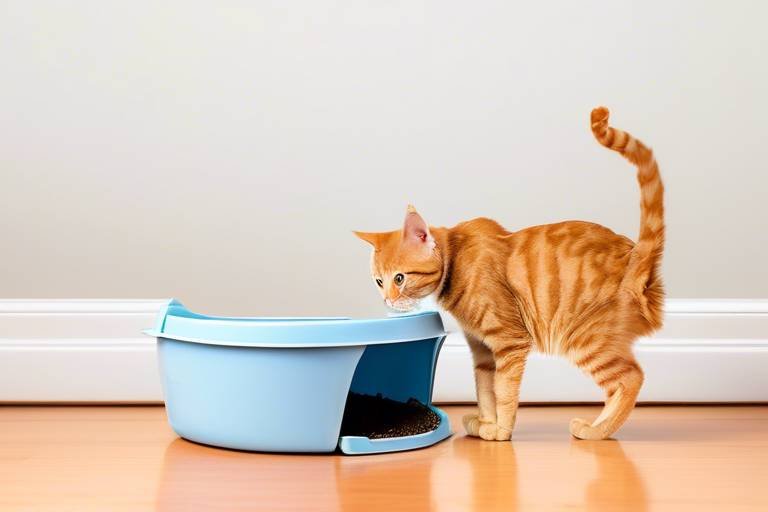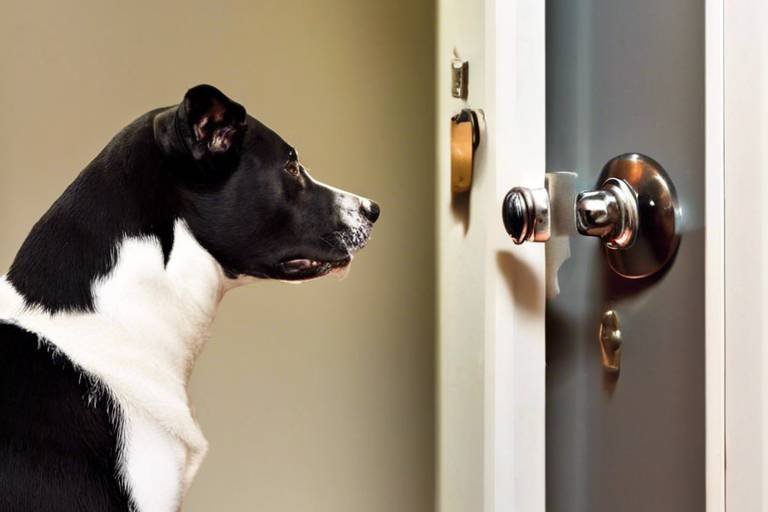How to Train Your Cat to Use the Litter Box
Training your cat to use the litter box is an essential part of pet ownership that can lead to a harmonious living environment for both you and your furry friend. Imagine coming home to a clean, odor-free space where your cat feels comfortable and secure. Sounds dreamy, right? But let’s face it, getting there can sometimes feel like a Herculean task. Fear not! This comprehensive guide will walk you through the steps to effectively train your cat to use the litter box, ensuring cleanliness and comfort in your home.
Cats are unique creatures with distinct behaviors that greatly influence their litter box habits. To successfully train your cat, it's crucial to recognize these behaviors. For instance, did you know that cats instinctively want to bury their waste? This natural instinct can be leveraged to create a more effective training environment. By understanding your cat's body language and habits, you can tailor the litter box setup to suit their needs, making it more inviting. Pay attention to how your cat interacts with their surroundings, as this can provide valuable insights into their comfort levels and preferences.
Selecting the appropriate litter box is a pivotal step in ensuring your cat's comfort and willingness to use it. Factors such as size, style, and accessibility play a significant role in their decision-making process. A box that is too small can feel cramped, while one that is too large may intimidate your kitty. It's essential to strike a balance. Generally, a box that is one and a half times the length of your cat from nose to tail is a good rule of thumb. Additionally, consider the location of the box; it should be in a quiet, low-traffic area where your cat can feel safe and secure.
There are various types of litter boxes available, each with its own advantages. Exploring these options can help you find the best fit for your cat's preferences. Here’s a quick overview:
| Type | Advantages |
|---|---|
| Covered Boxes | Provide privacy and help contain odors. |
| Uncovered Boxes | Offer easy access, which some cats prefer. |
| Self-Cleaning Boxes | Reduce maintenance time, though some cats may resist them. |
Covered boxes can offer your cat a sense of privacy, which is essential for their comfort. However, some cats may feel trapped or confined, leading to reluctance in using the box. On the other hand, uncovered boxes provide easy access and visibility, making them appealing to more timid cats. It’s worth experimenting with both styles to see which one your feline friend prefers.
Self-cleaning litter boxes can significantly reduce the time you spend scooping and cleaning. However, it’s important to note that not all cats will take to these high-tech options. Some may be hesitant or scared of the mechanisms involved. Before investing in a self-cleaning box, observe your cat's personality and preferences to ensure it will be a good fit.
The type of litter you use can significantly impact your cat's willingness to use the box. Here are some factors to consider:
- Texture: Cats often prefer a fine, sandy texture that feels comfortable under their paws.
- Scent: Unscented litters are generally more appealing, as strong fragrances can deter cats.
- Clumping Ability: Good clumping litters make it easier to clean the box and keep odors at bay.
Experimenting with different types of litter can help you find the one that your cat prefers, making the litter box a more inviting place.
Creating a consistent routine helps your cat understand when and where to use the litter box. Regular feeding and playtimes can facilitate this process. Cats thrive on routine, and by establishing a schedule, you can help your cat learn to associate certain times of the day with using the litter box. For example, after meals or playtime, gently guide your cat to the box to reinforce the behavior.
Associating the litter box with positive experiences can encourage your cat to use it. Treats and praise can be powerful tools in reinforcing this behavior. Whenever your cat uses the litter box successfully, shower them with affection or offer a small treat. This will help create a positive connection between the litter box and rewarding experiences, making them more likely to return.
Training your cat may come with challenges. Identifying and addressing common issues can make the process smoother and more successful for both you and your pet. One common challenge is dealing with accidents. It’s important to understand that accidents are a normal part of the training process. Instead of getting frustrated, try to identify the cause. Is the litter box clean? Is it located in a quiet area? Understanding why accidents occur can help you address the issue and prevent future occurrences.
Accidents can happen for a variety of reasons, from stress to changes in the environment. If your cat has an accident, clean it up thoroughly to remove any lingering odors that might encourage repeat offenses. Use an enzymatic cleaner designed for pet messes to ensure all traces are eliminated. Remember, patience is key!
If your cat is reluctant to use the litter box, it may be due to aversion. This could stem from factors like a dirty box, an uncomfortable type of litter, or even a stressful environment. Identifying the causes and making necessary adjustments can help resolve this issue. For instance, if your cat is avoiding the box, try changing the litter or moving the box to a quieter location.
Q: How often should I clean the litter box?
A: Ideally, you should scoop the litter box daily and do a complete change of litter once a week.
Q: What if my cat refuses to use the litter box?
A: Check for cleanliness, type of litter, and stress factors in your cat’s environment. It may take time for them to adjust.
Q: Can I use any type of litter?
A: It's best to choose a litter that is unscented and has a texture your cat prefers. Experiment to find the right one.
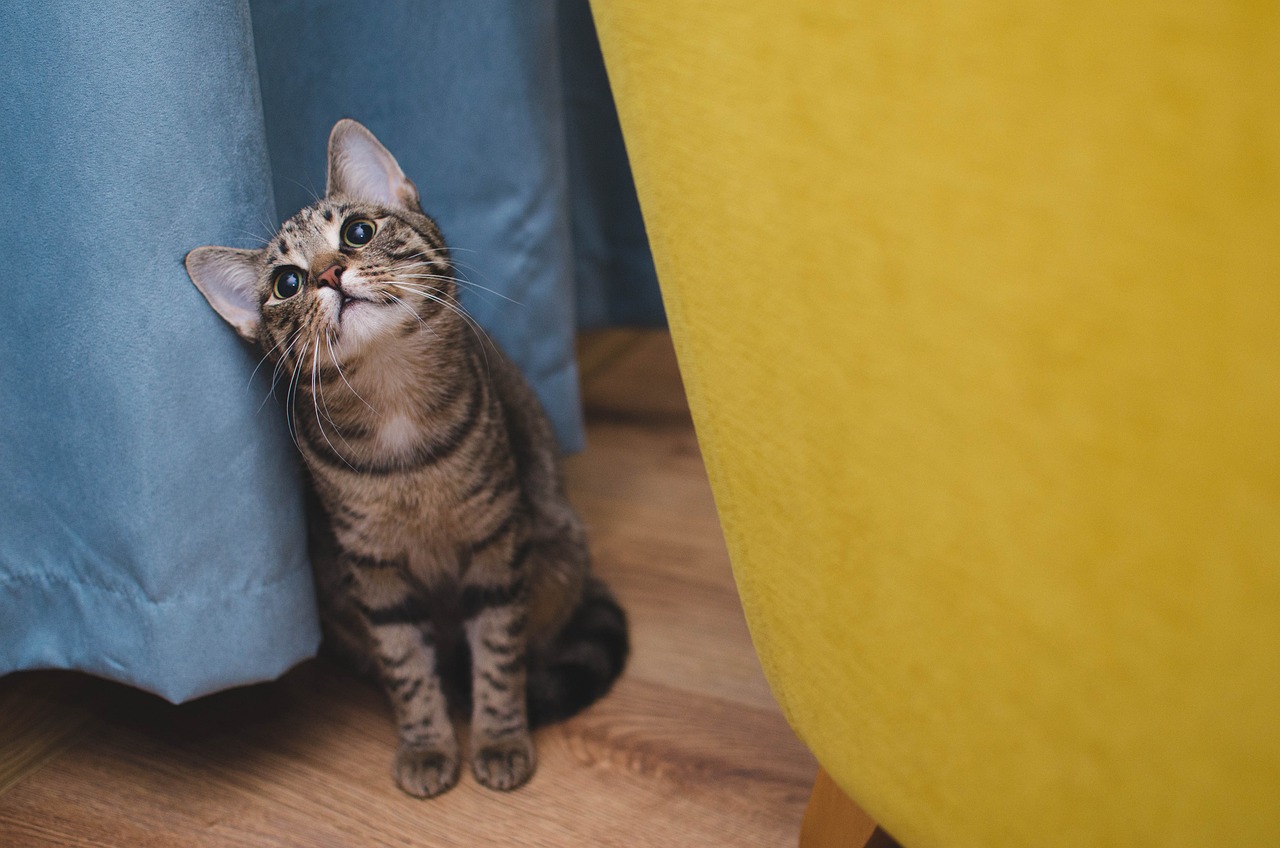
Understanding Feline Behavior
When it comes to our furry companions, understanding their behavior is like unlocking a treasure chest of insights that can make our lives—and theirs—much easier. Cats are fascinating creatures, and their litter box habits are no exception. Each cat has its own personality, quirks, and preferences, which can significantly influence how they interact with their litter box. For instance, some cats prefer a specific type of litter, while others may be particular about the location of their litter box. By observing these behaviors closely, you can create an environment that encourages your feline friend to use the litter box consistently.
One of the first things to consider is that cats are naturally inclined to bury their waste, a behavior rooted in their instinctual need to hide their scent from predators. This means that if your cat is avoiding the litter box, it might not be a matter of disobedience but rather discomfort with the setup. For example, if the litter is too coarse or the box is too small, your cat may feel less inclined to use it. It's essential to pay attention to your cat's body language and preferences to ensure that their litter box experience is as comfortable as possible.
Moreover, the location of the litter box plays a crucial role in your cat's willingness to use it. Cats are territorial animals and prefer a quiet, private space where they can do their business without interruptions. If the litter box is placed in a high-traffic area or near loud appliances, your cat may feel anxious or stressed, leading to avoidance. In fact, a study showed that many cats prefer their litter boxes to be located in a calm environment, away from their food and water bowls, to maintain their comfort and hygiene.
In addition to these factors, consider your cat's age and health. Kittens may need more guidance and encouragement, while older cats might require a more accessible box due to mobility issues. It's crucial to adapt your approach based on your cat's life stage and any potential health concerns. For example, if you notice your senior cat struggling to climb into a standard litter box, investing in a low-entry box could make a world of difference. Remember, a happy cat is a well-adjusted cat, and understanding their behavior is the first step in ensuring they feel secure and comfortable in their home.
In summary, understanding feline behavior is key to successful litter box training. By observing your cat's habits and preferences, you can create a positive environment that encourages them to use the litter box consistently. Whether it's adjusting the litter type, changing the box's location, or considering your cat's age and health, small changes can lead to significant improvements in their litter box experience.
- How often should I clean the litter box? It's best to scoop the litter box daily and do a complete change of litter at least once a week.
- What type of litter is best for my cat? Most cats prefer clumping, unscented litter, but it's essential to experiment to find what your cat likes best.
- Why is my cat suddenly avoiding the litter box? Changes in behavior can indicate health issues, stress, or discomfort with the litter box setup.
- Can I train my cat to use the toilet instead of a litter box? Yes, some cat owners successfully train their cats to use the toilet, but it requires patience and a gradual approach.

Choosing the Right Litter Box
Choosing the right litter box for your feline companion is more than just a matter of preference; it’s a crucial step in ensuring their comfort and encouraging proper litter box habits. Just like humans have their own preferences for bathrooms, cats have their own unique needs when it comes to their personal space. You want to make sure that your cat feels safe and secure while doing their business, which means paying attention to several important factors.
The size of the litter box is one of the first things to consider. Ideally, the box should be large enough for your cat to turn around comfortably and dig without feeling cramped. A good rule of thumb is to choose a litter box that is at least one and a half times the length of your cat from nose to tail. If you have a larger breed, like a Maine Coon, you may want to opt for an extra-large box to accommodate their size.
Next, think about the style of the litter box. Cats can be quite particular about their bathroom setups. Some prefer a more private space, while others enjoy an open environment. Here’s a quick breakdown of the most common types:
- Covered Boxes: These provide privacy and can help contain odors, but some cats may feel trapped or uncomfortable in them.
- Uncovered Boxes: These are easy for cats to access and can make them feel less confined, but they may not contain odors as well as covered options.
- Self-Cleaning Boxes: These are great for busy pet owners, but they can be intimidating for some cats. Always observe your cat's reaction to ensure they feel safe using it.
Another critical aspect to consider is accessibility. If you have an older cat or one with mobility issues, a box with lower sides can make it easier for them to enter and exit. Additionally, placing the litter box in a quiet, low-traffic area can help your cat feel more at ease, as they won’t feel rushed or threatened while doing their business.
Finally, don't forget about aesthetics! While this may not seem essential, the look of the litter box can affect where you place it in your home. Some boxes come with decorative designs or colors that can blend in with your home decor, making it easier to find a suitable spot that doesn’t clash with your interior design.
In summary, choosing the right litter box is a combination of considering your cat's size, preferences, and needs, along with your own practicalities. By taking the time to select the perfect litter box, you’ll create a more inviting and comfortable bathroom experience for your furry friend, which can lead to better litter box habits overall.
1. How often should I clean the litter box?
It’s recommended to scoop the litter box daily and do a complete clean with soap and water weekly to maintain hygiene.
2. What if my cat refuses to use the new litter box?
Give your cat time to adjust and consider placing the new box in the same location as the old one. You can also try using the same type of litter they’re used to.
3. How many litter boxes should I have?
A good rule of thumb is to have one litter box per cat, plus one extra. This helps prevent territorial disputes and gives your cats options.
4. Can I use any type of litter in the box?
Not all litters are created equal! Cats generally prefer unscented, clumping litter, but you should observe your cat's preferences and adjust accordingly.
Types of Litter Boxes
When it comes to choosing a litter box for your furry friend, the options can feel overwhelming. But don’t worry! Understanding the different types of litter boxes can make the decision much easier. Each type comes with its own set of advantages and disadvantages, and what works for one cat may not work for another. So, let’s dive into the various types of litter boxes available and how to choose the best one for your feline companion.
First up, we have the traditional open litter boxes. These are the most common type and usually consist of a simple rectangular or square shape without a lid. They provide easy access for your cat, making them a popular choice, especially for kittens who are just learning to use the litter box. However, one downside is that they can lead to litter being kicked out, creating a mess around your home. If you have a playful cat, this might be something to consider!
Next, let’s talk about covered litter boxes. These boxes come with a lid or a cover that provides your cat with a sense of privacy while doing their business. Many cats appreciate this added security, and it can help contain odors and litter scatter. However, some cats may feel trapped or uncomfortable in a covered box, so it’s essential to observe your cat’s behavior and preferences. If they seem hesitant, it might be time to try an open box instead.
For those who prefer a more automated approach, self-cleaning litter boxes are an excellent option. These high-tech boxes automatically rake and clean the litter after your cat uses it, significantly reducing the time and effort you need to spend on maintenance. However, not all cats warm up to these gadgets. Some may be frightened by the noise or movement, so it's crucial to introduce them slowly. If your cat is more of a traditionalist, this option might not be the best fit.
Lastly, there are corner litter boxes, which are designed to fit snugly in corners, saving space in your home. These boxes can be a great solution for small living areas, but you’ll want to ensure that your cat feels comfortable using them. The shape may not be ideal for every cat, so keep an eye on their behavior to ensure they are using it consistently.
In summary, when choosing a litter box, consider your cat’s personality and preferences. It might take some experimentation to find the perfect fit, but once you do, you’ll create a more pleasant experience for both you and your kitty. Remember, a happy cat means a happy home!
- How do I know which litter box my cat prefers? Observe your cat's behavior. If they seem hesitant or avoid a certain box, it might not be the right fit for them.
- Can I use multiple litter boxes? Yes! Having multiple boxes can give your cat options and help prevent territorial disputes, especially in multi-cat households.
- What if my cat refuses to use the litter box? Check for cleanliness, location, and type of litter. Sometimes, cats can be picky, and a simple change can make all the difference.
Covered vs. Uncovered Boxes
When it comes to choosing between covered and uncovered litter boxes, it’s essential to consider your cat's unique personality and preferences. Just like some people prefer a cozy nook to do their business, many cats appreciate a little privacy. Covered boxes provide that sense of seclusion, making them feel safe and secure while they go about their business. However, this isn’t a one-size-fits-all solution. Some cats may feel trapped or claustrophobic in a covered box, leading to reluctance in using it.
On the other hand, uncovered boxes offer easy access and a more open environment. This can be particularly beneficial for kittens or older cats with mobility issues, as they don’t have to navigate a lid. Plus, uncovered boxes can help keep an eye on your cat’s litter habits, which is crucial for monitoring their health. If you notice any changes in their bathroom behavior, it can be a telltale sign that something might be off.
To help you decide, here’s a quick comparison:
| Feature | Covered Boxes | Uncovered Boxes |
|---|---|---|
| Privacy | High | Low |
| Accessibility | Moderate | High |
| Odor Control | Better | Worse |
| Monitoring | Harder | Easier |
Ultimately, the choice between a covered or uncovered box depends on your cat’s individual needs. If your feline friend seems hesitant, consider trying both options. You might find that they prefer one over the other, or perhaps they enjoy having both to choose from. Remember, it’s all about creating a comfortable and inviting space for your furry companion. After all, a happy cat is a litter box-using cat!
- How can I tell if my cat prefers a covered or uncovered box? Observe their behavior. If they seem anxious or avoid the box, it might be too enclosed for them.
- Can I use both types of boxes at once? Absolutely! Offering both can help you determine which your cat prefers.
- What if my cat refuses to use the covered box? Try removing the cover for a while and see if they start using it. You can gradually reintroduce the cover if they seem comfortable.
Self-Cleaning Options
When it comes to litter boxes, have gained immense popularity among cat owners. These innovative devices can significantly reduce the time and effort you need to spend on maintaining your cat's hygiene. Imagine a world where you no longer have to scoop litter daily; instead, you can enjoy more quality time with your feline friend! However, before diving into the world of self-cleaning litter boxes, it's essential to understand how they work and their pros and cons.
Self-cleaning litter boxes typically use either a rake system or a rotating mechanism to automatically sift through the litter and remove waste. This process usually occurs shortly after your cat leaves the box, ensuring that the litter stays fresh and clean. While this feature sounds fantastic, some cats may be hesitant to use these boxes due to their mechanical nature. It's crucial to consider your cat's personality and preferences when deciding if a self-cleaning litter box is the right fit.
Here are some key advantages and disadvantages to consider:
- Advantages:
- Less Maintenance: With self-cleaning boxes, you can reduce the frequency of manual cleaning, freeing up time for other activities.
- Odor Control: These boxes often do a better job at controlling odors, as waste is removed quickly.
- Convenience: Many models come with features like odor filters and waste compartments, making disposal easier.
- Disadvantages:
- Cost: Self-cleaning litter boxes can be more expensive than traditional options, which may not fit every budget.
- Noise: Some models can be noisy during operation, which might scare your cat.
- Learning Curve: Cats may need time to adjust to the new technology, and not all cats will take to it.
Ultimately, the decision to invest in a self-cleaning litter box should be based on your cat's behavior and your lifestyle. If your cat is curious and adaptable, they may embrace the change with open paws. However, if they are more sensitive to changes in their environment, it might be worth sticking with a traditional litter box for now. Remember, the goal is to create a comfortable and inviting space for your cat, ensuring they feel safe and secure during their bathroom breaks.
Here are some common questions cat owners have regarding self-cleaning litter boxes:
- Are self-cleaning litter boxes safe for my cat? Yes, they are designed with safety features to prevent harm to your cat. However, always monitor your cat's behavior to ensure they are comfortable.
- How often do I need to change the litter in a self-cleaning box? It's recommended to change the litter every 2-4 weeks, depending on usage and the type of litter you use.
- Do self-cleaning litter boxes work with all types of litter? Most self-cleaning boxes work best with clumping litter. Check the manufacturer's guidelines for specific recommendations.
Choosing the Right Litter
When it comes to training your cat to use the litter box, one of the most crucial decisions you’ll make is selecting the right litter. Just like humans have preferences for certain types of flooring or scents, cats have their own unique likes and dislikes. The right litter can make a world of difference in whether your feline friend feels comfortable using the box or turns their nose up at it. So, let’s dive into the key factors to consider when choosing litter.
First off, consider the texture of the litter. Cats generally prefer fine-grained litter that mimics the feel of sand or dirt. If the litter is too rough or uncomfortable, your cat might avoid it altogether. You can find a variety of textures, from clumping clay to natural options made from corn or wheat. Each cat is different, so it might take some experimentation to find what your kitty prefers.
Next, think about the scent. While some litters are heavily scented to mask odors, many cats are sensitive to strong fragrances and may shy away from them. Instead, look for unscented options or those with mild, natural scents. This will not only keep your cat happy but also ensure that their litter box is a pleasant place for them to do their business.
Another important factor is the clumping ability of the litter. Clumping litter makes it easier to scoop out waste and keep the box clean. It forms solid clumps when wet, which can be removed quickly, keeping the rest of the litter fresh. Non-clumping litter, on the other hand, may require more frequent changes, which can be a hassle. Here’s a quick comparison table to help you visualize the pros and cons:
| Type of Litter | Clumping | Odor Control | Dust Levels | Price |
|---|---|---|---|---|
| Clay | Yes | Good | High | Low |
| Natural (Corn, Wheat) | Yes | Good | Low | Medium |
| Pine | No | Moderate | Low | Medium |
| Paper | No | Poor | Very Low | High |
Lastly, consider your cat's health. If your cat has any respiratory issues or allergies, you might want to avoid dusty litters. Opt for low-dust options that are easy on their lungs. Furthermore, if you have a kitten, look for litter that is safe for young cats, as some litters can be harmful if ingested.
In conclusion, choosing the right litter is not just about convenience; it’s about ensuring your cat feels comfortable and secure in their environment. By paying attention to texture, scent, clumping ability, and health considerations, you can create a litter box setup that your cat will love. Remember, a happy cat makes for a happy owner!
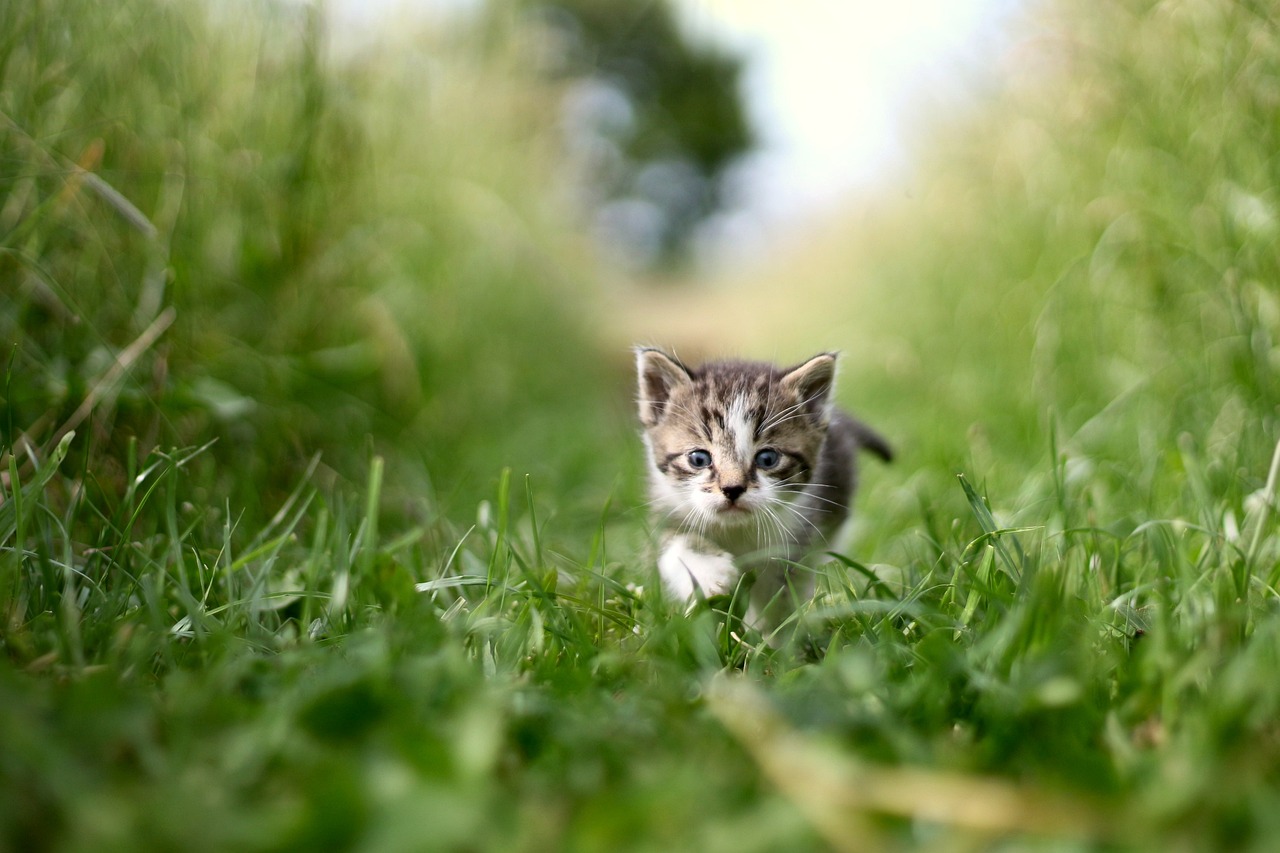
Establishing a Routine
Creating a consistent routine for your cat is essential for effective litter box training. Just like humans, cats thrive on predictability. Imagine waking up every day at the same time, having breakfast at a specific hour, and knowing when playtime is scheduled. This structure not only provides comfort but also helps your feline friend understand when and where to do their business. A well-established routine can transform your cat's litter box habits from hit-or-miss to a reliable practice.
Start by setting regular feeding times. Cats are creatures of habit, and feeding them at the same times each day will help regulate their bathroom schedule. For instance, if you feed your cat in the morning and evening, they will likely need to use the litter box shortly after meals. Try to observe your cat's natural patterns. Do they tend to use the litter box after eating, playing, or waking up? By aligning the litter box availability with these moments, you can significantly increase the chances of successful usage.
Additionally, consider incorporating playtime into your routine. Engaging your cat in active play can stimulate their natural instincts, leading to a more regular bathroom schedule. After a vigorous play session, your cat may feel the urge to relieve themselves. This is a perfect opportunity to guide them to the litter box. You might even create a little ritual where, after playtime, you gently guide your cat to the litter box, reinforcing the idea that this is the place to go.
It’s also essential to ensure that the litter box is always accessible. Cats can be quite particular about their bathroom habits, and if they feel the need to go but can't access the box, they may find a less desirable spot. Make sure the litter box is in a quiet, low-traffic area of your home, away from loud noises and disturbances. A good rule of thumb is to have one litter box per cat, plus one extra. This way, your feline friend will always have a clean and available option.
In summary, establishing a routine that includes consistent feeding times, scheduled play sessions, and accessible litter boxes can significantly enhance your cat's litter box training experience. Remember, patience is key! Just as it takes time for us to adjust to new routines, your cat will need some time to adapt. Celebrate small victories along the way, and soon enough, you’ll find that your cat has become a litter box pro!
- How long does it take to train a cat to use the litter box?
Training can take anywhere from a few days to several weeks, depending on your cat's personality and past experiences. - What should I do if my cat refuses to use the litter box?
Check for cleanliness, location, and type of litter. Sometimes, a simple change can make a significant difference. - Can I use any type of litter?
Not all litter is created equal! Cats may prefer certain textures or scents, so it’s worth experimenting to find what works best for your pet. - Is it normal for cats to have accidents during training?
Absolutely! Accidents are a part of the learning process. Stay calm and clean up without punishing your cat.
Encouraging Positive Associations
When it comes to training your cat to use the litter box, one of the most effective strategies is to encourage positive associations with the box itself. Think of it as creating a cozy little haven where your feline friend feels safe and happy. Just like humans, cats thrive on positive reinforcement, so it's essential to make their litter box experience as pleasant as possible. Start by placing the litter box in a quiet, low-traffic area of your home. This will help your cat feel secure and less stressed when it's time to do their business.
Once you've established a great location, consider using treats and praise to reinforce the desired behavior. For instance, when your cat uses the litter box, shower them with affection and give them a small treat. This not only rewards them for their good behavior but also helps them associate the litter box with something enjoyable. You can even create a little ritual around it. Maybe every time they use the box, you could play their favorite game for a few minutes afterward. It's all about making that connection!
Additionally, keep an eye on your cat's body language. If they seem hesitant or unsure about the litter box, gently encourage them by placing them inside the box after meals or when they wake up from a nap. Cats often have a natural instinct to bury their waste, so once they get the hang of it, they may start going on their own. Just remember to be patient and understanding; every cat is different, and some may take a little longer to adjust than others.
Moreover, consider the type of litter you use. Cats can be quite finicky about texture and smell. Experimenting with different types of litter can lead you to discover what your cat prefers. When you find the right one, be sure to maintain a clean litter box. Cats are naturally clean animals, and a dirty box can deter them from using it. Regularly scooping out waste and changing the litter will go a long way in ensuring your cat feels comfortable.
In summary, creating positive associations with the litter box involves a combination of location, rewards, and cleanliness. By turning this essential task into a positive experience, you're not just training your cat; you're enhancing your bond with them. Who knew that something as simple as a litter box could be a bridge to a deeper relationship with your furry friend?
- How long does it take to train a cat to use the litter box?
Training can vary from cat to cat, but most will learn within a few days to a couple of weeks. - What if my cat refuses to use the litter box?
Consider factors like location, type of litter, and cleanliness. Sometimes, stress or health issues can also play a role. - Can I use any type of litter for my cat?
Not all cats like the same litter. Experiment with different types until you find one your cat prefers. - Should I punish my cat for accidents?
No, punishment can create fear and anxiety. Instead, focus on positive reinforcement.
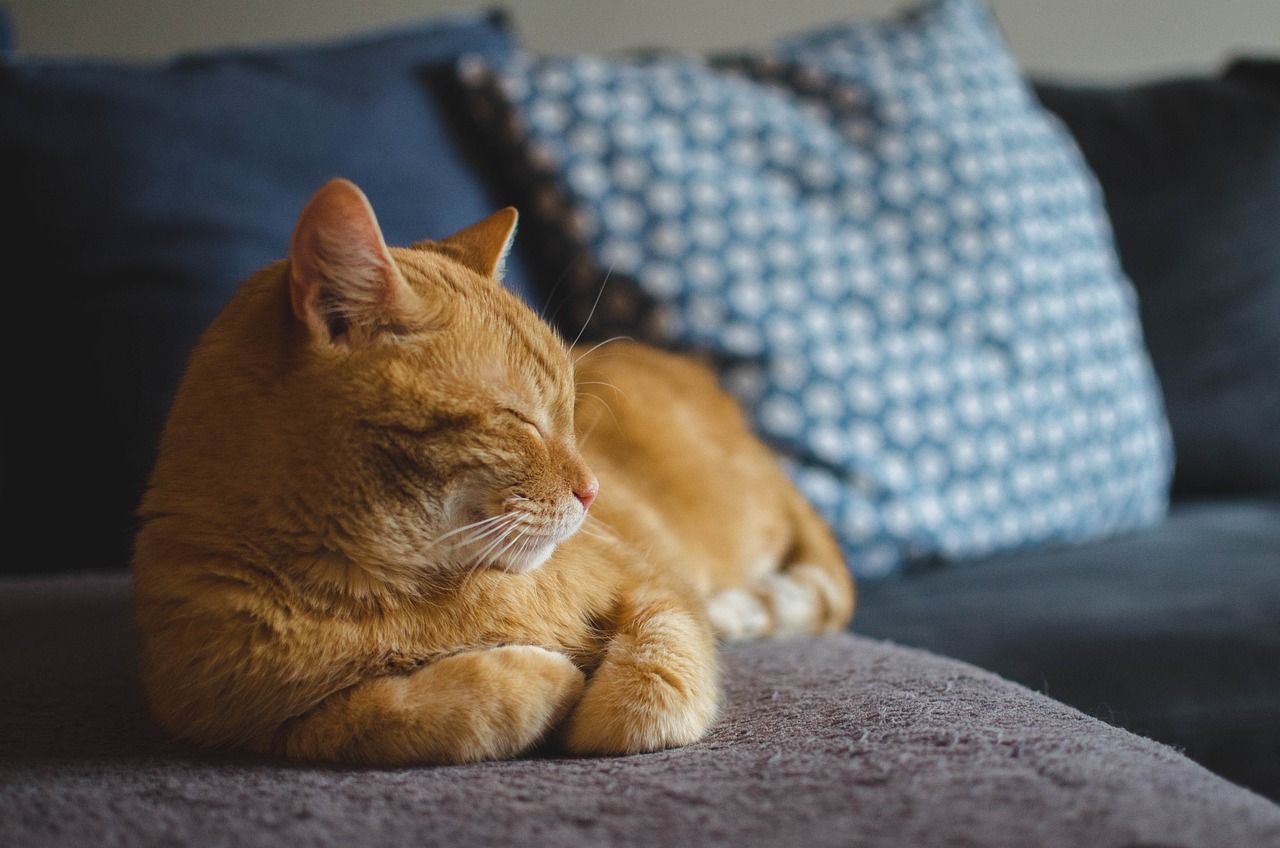
Common Training Challenges
Training your cat to use the litter box can be a rewarding experience, but it’s not without its challenges. Just like us, cats have their quirks and preferences, which means that sometimes they might not take to the litter box as easily as you’d hope. Understanding these common training challenges can help you navigate the process more smoothly and ensure that both you and your furry friend are comfortable with the arrangement.
One of the most frequent issues cat owners face is dealing with accidents. It’s essential to remember that accidents are a normal part of the training journey. Cats may have accidents for various reasons, including stress, health issues, or simply not understanding where they are supposed to go. If your cat has an accident, try to remain calm and avoid scolding them, as this can create anxiety and worsen the situation. Instead, observe their behavior to identify any potential triggers or patterns that might indicate why the accident occurred.
Another common challenge is litter box aversion. This can happen for several reasons, such as the type of litter you’re using, the cleanliness of the box, or even the box's location. If your cat seems hesitant to use the litter box, consider the following factors:
- Litter Type: Some cats have strong preferences for certain textures or scents. Experimenting with different types of litter can help you find one that your cat loves.
- Box Cleanliness: Cats are naturally clean animals. Ensure that you scoop the litter box daily and change the litter regularly to maintain a fresh environment.
- Location: The placement of the litter box is crucial. It should be in a quiet, low-traffic area where your cat feels safe and secure.
It’s also important to note that some cats may be more sensitive to changes in their environment, which can lead to reluctance in using the litter box. If you’ve recently moved, had new pets or people enter the home, or changed your cat’s routine, they may need some time to adjust. Patience is key here; give your cat the space they need to feel comfortable again.
To help tackle these challenges, keep an eye on your cat’s behavior and be proactive in addressing any issues that arise. If accidents continue or your cat shows persistent aversion to the litter box, it may be worth consulting with a veterinarian to rule out any underlying health concerns. Remember, your cat’s well-being is the top priority, and understanding their needs will ultimately lead to a happier, healthier relationship.
Here are some common questions that cat owners often have regarding litter box training:
- How long does it typically take to train a cat to use the litter box? Most cats can be trained in a few days to a couple of weeks, but this can vary based on the individual cat.
- What should I do if my cat refuses to use the litter box? Check for any health issues, ensure the box is clean, and consider trying different types of litter.
- Is it normal for my cat to have accidents even after being trained? Yes, accidents can happen due to stress, changes in the environment, or health issues.
Dealing with Accidents
Accidents happen. It's a part of life, especially when you're training a new feline friend to use the litter box. You might find yourself facing unexpected messes on your floor, and while it can be frustrating, it's essential to remember that your cat isn’t misbehaving on purpose. Cats, like people, have their own reasons for what they do, and understanding these reasons can help you navigate through this training phase with patience and grace.
First and foremost, it’s crucial to stay calm and not to punish your cat for accidents. Punishment can lead to fear and anxiety, making the situation worse. Instead, take a moment to analyze the situation. Ask yourself questions like: Was the litter box clean? Is the box in a quiet, accessible location? Could my cat be feeling unwell? These inquiries can provide insights into why your cat may have chosen a less-than-ideal spot for their business.
One common reason for accidents is a dirty litter box. Cats are naturally clean animals, and they prefer to use a clean space. If the box is not scooped daily or if the litter is not changed regularly, your cat may decide to go elsewhere. Aim to scoop the litter box at least once a day and do a full change of litter every week. This routine not only keeps the area hygienic but also encourages your cat to use the box consistently.
Another factor to consider is the location of the litter box. If it's placed in a high-traffic area or somewhere noisy, your cat might feel uncomfortable using it. Cats appreciate their privacy, so try to find a quiet corner of your home where your cat can feel secure while doing their business.
Sometimes, health issues can lead to accidents. If your cat is experiencing discomfort or has a medical condition, they might avoid the litter box altogether. If you notice any changes in your cat’s bathroom habits, such as straining to urinate or frequent accidents, it’s crucial to consult a veterinarian. They can rule out any underlying health problems that could be causing this behavior.
To help manage accidents, consider the following strategies:
- Clean Up Properly: Use an enzymatic cleaner to remove any odors from accidents. This will prevent your cat from returning to the same spot.
- Provide Multiple Boxes: If you have more than one cat or a large home, consider setting up multiple litter boxes. The general rule is to have one box per cat, plus one extra.
- Monitor Changes: Keep an eye on your cat’s habits and any changes in behavior. This can help you catch issues early.
In summary, while dealing with accidents can be a challenge, it’s important to approach the situation with understanding and care. By identifying the root causes and making necessary adjustments, you can guide your cat back to using the litter box consistently. Remember, patience is key. With time, your furry friend will learn to associate the litter box with a safe and clean space, making accidents a thing of the past.
Q: How long does it typically take to train a cat to use the litter box?
A: Training a cat to use the litter box can take anywhere from a few days to a few weeks, depending on the cat's age, personality, and previous experiences. Consistency and positive reinforcement are essential.
Q: What should I do if my cat refuses to use the litter box?
A: If your cat refuses to use the litter box, check for cleanliness, location, and any potential health issues. You may also want to try different types of litter or boxes to see what they prefer.
Q: Is it normal for cats to have accidents even after being trained?
A: Yes, occasional accidents can happen, especially if there are changes in the cat's environment, stress, or health issues. Pay attention to patterns and consult a vet if accidents become frequent.
Addressing Litter Box Aversion
Litter box aversion can be a perplexing issue for cat owners, often leaving them scratching their heads in confusion. If your furry friend is turning their nose up at the litter box, it’s essential to understand that this behavior is not uncommon. Cats can be quite particular about their bathroom habits, and several factors might contribute to their reluctance to use the litter box. First and foremost, it’s crucial to evaluate the environment surrounding the litter box. Is it located in a quiet, accessible area? Cats are creatures of comfort and may avoid a box that feels too exposed or is placed in a high-traffic area. Imagine if you had to use a restroom in the middle of a busy street—uncomfortable, right?
Another aspect to consider is the type of litter being used. Cats can be quite finicky about texture and scent. For instance, if you’ve recently switched to a new type of litter, your cat might not appreciate the change. Some cats prefer fine, sandy textures, while others might like something more granular. It’s like choosing between a soft pillow and a hard one—everyone has their preference! If your cat is showing signs of aversion, try experimenting with different types of litter to see what they prefer. You might find that a simple change can make a world of difference.
Additionally, cleanliness plays a significant role in litter box usage. Cats are naturally clean animals, and a dirty box can deter them from using it. Ensure that you’re scooping the litter box daily and changing the litter regularly. A good rule of thumb is to have one more litter box than the number of cats you have. For example, if you have two cats, you should have at least three litter boxes. This way, your cats will always have access to a clean space when nature calls.
Finally, it’s essential to observe your cat for any signs of stress or health issues. Sometimes, aversion to the litter box can stem from underlying medical problems, such as urinary tract infections or other health concerns. If you notice any unusual behaviors, such as straining to urinate or blood in the urine, it’s crucial to consult your veterinarian. Just like us, cats can have off days, and it’s our job as their caregivers to ensure they are healthy and happy.
In summary, addressing litter box aversion involves a combination of environmental adjustments, litter preferences, cleanliness, and health considerations. By paying close attention to these factors, you can help your cat feel more comfortable and confident in using their litter box. Remember, patience is key! With a little time and effort, you can turn your cat’s aversion into a positive bathroom experience.
- What should I do if my cat continues to avoid the litter box? If your cat persists in avoiding the litter box, consider consulting a veterinarian to rule out any medical issues.
- How often should I clean the litter box? It's recommended to scoop the litter box daily and change the litter at least once a week to maintain cleanliness.
- Can I use scented litter? While some cats may tolerate scented litter, others might be put off by it. It's best to stick with unscented options if your cat shows aversion.
- Is it normal for cats to have preferences for certain types of litter? Yes, cats can be very particular about their litter. Experimenting with different types can help you find what your cat prefers.
Frequently Asked Questions
- How long does it take to train a cat to use the litter box?
Training a cat to use the litter box can vary widely depending on the individual cat. Some cats may catch on within a few days, while others might take a couple of weeks. Consistency and patience are key! Just like teaching a toddler, every cat learns at their own pace.
- What type of litter is best for my cat?
The best type of litter often depends on your cat's preferences. Some cats prefer clumping litter because it makes it easier to cover their waste, while others might like non-clumping varieties. Experimenting with different textures and scents can help you find the perfect fit for your feline friend!
- Why is my cat avoiding the litter box?
If your cat is avoiding the litter box, it could be due to a variety of reasons such as stress, an unclean box, or even a medical issue. Pay attention to their behavior and try to identify any changes in their environment that might be causing this aversion.
- Should I use a covered or uncovered litter box?
This really depends on your cat's personality! Some cats feel safer and more secure in a covered box, while others prefer the openness of an uncovered one. Observe your cat's behavior to see which option they seem to prefer.
- What can I do if my cat has accidents outside the litter box?
Accidents can happen! First, clean the area thoroughly to remove any lingering scent that might attract them back. Then, assess the situation: Is the litter box clean? Is it in a quiet, accessible location? Identifying the cause can help prevent future accidents.
- How can I encourage my cat to use the litter box?
Positive reinforcement is your best friend here! Reward your cat with treats or praise whenever they use the litter box. Creating a routine can also help; try feeding and playing with your cat around the same times each day to establish a pattern.
- Are self-cleaning litter boxes a good option?
Self-cleaning litter boxes can be a great convenience for busy cat owners, but not all cats will take to them. Some may feel uncomfortable with the noise or movement. If you decide to try one, monitor your cat's reaction to ensure they feel safe using it.

